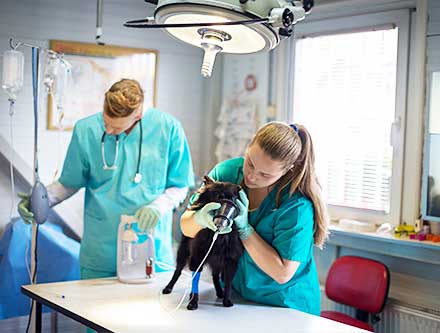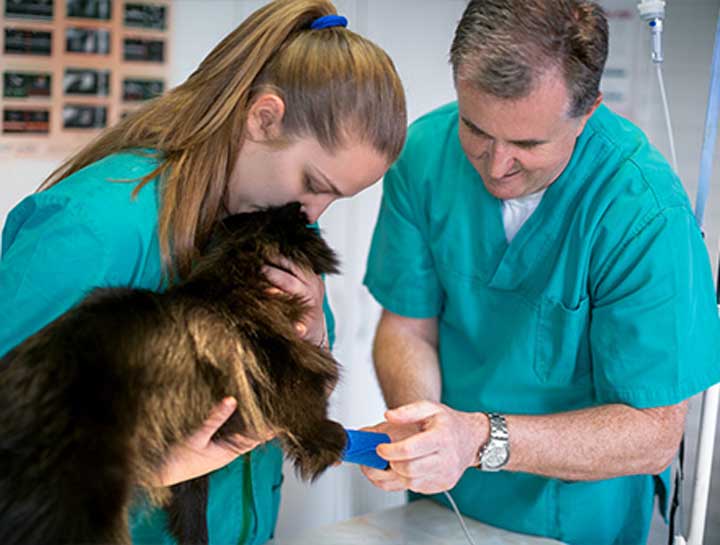Anesthesia and Patient Monitoring
During surgery and other medical procedures, our dedicated team of veterinarians and veterinary technicians closely monitors all patients to ensure their safety. Whether the procedure is routine or more advanced, we provide vigilant monitoring. The type of anesthesia used varies depending on the procedure, with some requiring general anesthesia and others only needing local anesthesia.
-
Patient Monitoring: During any procedure involving anesthesia, our veterinarians and veterinary technicians continuously monitor your pet's vital signs, including heart rate, respiratory rate, blood pressure, and oxygen levels. This vigilant monitoring helps us promptly address any changes and maintain your pet's safety.
-
Sedation/Tranquilization: For procedures that do not require full anesthesia, we offer sedation or tranquilization to help keep your pet calm and relaxed. This technique is useful for diagnostic imaging, minor surgeries, or any situation where reducing anxiety and movement is beneficial.
-
 General Anesthesia: This technique involves rendering your pet completely unconscious and pain-free during surgery or other procedures. It is typically used for more invasive or lengthy operations. Our team carefully administers and monitors the anesthesia to ensure your pet's safety and comfort throughout the procedure.
General Anesthesia: This technique involves rendering your pet completely unconscious and pain-free during surgery or other procedures. It is typically used for more invasive or lengthy operations. Our team carefully administers and monitors the anesthesia to ensure your pet's safety and comfort throughout the procedure. -
Local Block: Local anesthesia involves numbing a specific area of your pet's body to prevent pain during minor procedures. This technique is ideal for less invasive treatments and allows your pet to remain awake and alert while ensuring they feel no discomfort.
If you have any questions or need more information about our anesthesia techniques, please feel free to contact us at (905) 851-0142!

